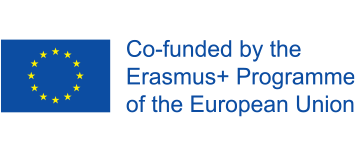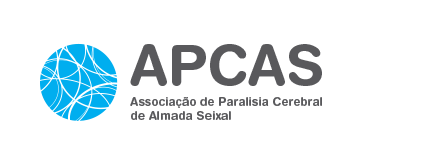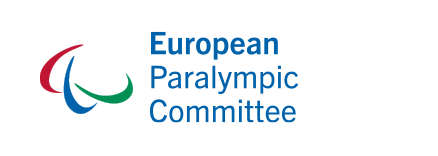MATERIALS & STRATEGIES FOR SPECIFIC ACTIVITIES
Output 3
Swimming
Output 3
Swimming is a sport and physical activity that can be practiced as prevention and leisure (health promotion), competition (sports training) and also as a specific rehabilitation / hydrotherapy program. It should be noted that in persons with some functional disability, the introduction to swimming usually occurs in rehabilitative terms.
Exercising in water is found to be effective as water dynamism diminishes the influence of gravity, allowing individuals greater freedom of movement, improved muscle and cardiovascular function, and the strengthening of motor skills (Kelly & Darrah, 2005). The aquatic environment provides the individual with varied experiences that favour their motor action, sensory and corporal perception and the perception of their potential, as well as the development of psychomotor skills, such as coordination, balance, body scheme, laterality, spatial orientation and temporal orientation, which are reflected in the improvement of overall functionality (Teixeira-Arroyo & Oliveira, 2007).
In addition to promoting motor skills (e.g. coordination, aerobic conditioning, reducing spasticity), it has emotional benefits with the development of self-confidence and self-esteem (Tsutsumi et al., 2004).
In terms of the teaching-learning process of swimming, you can start after birth but, for health reasons in public swimming pools, it is recommended to wait until three / four months after vaccinations, and it starts with the adaptation to the aquatic environment and also as a prevention and survival program due to child deaths from drowning in private pools. Only after this phase is over can one think about the technical training, which includes the specific teaching of swimming techniques and their improvement and, if it is necessary, the case in competition.
In this way, we can structure the phases of teaching swimming in:
- Psychomotricity in the aquatic environment (Fonseca, 2001) and media coverage (Potel, 1999)
- Halliwick
- Playful Activity in the Aquatic Environment
- Learning the swimming technique
- Paralympic Swimming
- Activities on water courses (swimming pools, sea, river beaches – surfing, rowing, canoeing, sailing,…)
Psychomotricity in the aquatic environment (Fonseca, 2001) and media coverage (Potel, 1999)
It is important to understand how this process occurs at a younger age, because adaptation to the aquatic environment is a process that requires some time for learning and neurological and emotional maturation of the child (Fonseca, 2001). In general, with the similar conceptions of Wallon and Ajuriaguerra, there is a three-phase perspective of swimming learning in young children:
- In the first phase it is important to highlight the role of security and adaptation to a new environment, where mediatization plays a prominent role. Thus, the child should feel safe (which must be transmitted by both visual and auditory information), allowing for emotional stability that will precede firmness and motor adaptation, processes associated with a maturation primarily of the limbic structures of the brain and after neocorticals. The mediatizing activity will be the basis for the development of a set of polysensory integrations and adaptive motor patterns, and should be didactic and exploitative, preparing the child to adapt and adjust, in body and brain terms, conditions and situations in the water. Motor autonomy will then be easier and more efficient if this phase is successful (Fonseca, 2001). Thus, it is intended that the child can gain autonomy, that is, to move in the aquatic environment with sufficient “ease” not to drown. Jumping, immersion and displacement are autonomy tasks that should start as early as possible (Montenegro & Sarmento, 1992).
- The second phase should promote adaptive enrichment to sensations from the aquatic environment. The child may produce adaptive responses to water due to an organization of proprioceptive, intrasomatic and exteroceptive sensations of aquatic involvement. Thus, swimming learning should combine motor skills and take into account a material, pedagogical and technical organization that will allow the diversification of experiences, which is important for children to develop their adaptive responses (Fonseca, 2001). All the postural and sensorimotor stimulation that water causes, influences the body recognition process, which is essential for the adaptation to take place. In this sense, to learn to swim it is necessary to accept water and allow it to be integrated as an integral part of our body, therefore it is necessary to develop the knowledge of it with activities such as accepting water in the eyes, ears, mouth and nose (Montenegro & Sarmento, 1992).
- The third phase should aim at the optimization of sensory integration and the appropriation of a transformative and praxis body. In this sense, coordinated and constructive movements in the aquatic environment should be observed, with an awareness of the pedagogical and playful function of aquatic activity, which will lead to the progressive enrichment of the child (Fonseca, 2001). The game therefore contributes to a relearning and / or postural and motor restructuring, increased autonomy and independence, being essential for the child to reach emotional stability, because it enables him a natural behaviour, which implies freedom of communication, body expression and experience where one can observe their feelings and their capacities, limits and impulses (Filho, 2003; Montenegro & Sarmento, 1992).

Halliwick
Speaking of adaptation to the aquatic environment, it should be noted that one of the widely used methods for initiating swimming for persons with disabilities is the Halliwick method. It was developed in 1949 by James McMillan in an attempt to understand the balance and movement problems evidenced by water-deficient people based on the principles of hydrodynamics, body mechanics and neurodevelopment that can be applied to people of any age with or without disability (International Halliwick Association, 2000). It consists of 10 points: Mental Adjustment; Disengagement; Transversal Rotation Control (formerly Vertical Rotation); Sagittal Rotation Control; Longitudinal Rotation Control (formerly Lateral Rotation); Combined Rotation Control; Upthrust; Balance in Stillness; Turbulent Gliding; Simple Progression and Basic Swimming Movement. The 10 points are structured in 4 levels (1 – Adjustment to the aquatic environment; 2 – Rotations; 3 – Fluctuation and Impulsion; 4 – Turbulence and Propulsion). Thus, the mental adaptation begins, going through the balance until the various progressions until the acquisition of the basic movements in the water. Further info at https://halliwick.org/about/
But in general, by adapting to the aquatic environment, it is intended that the practitioner is autonomous in the water, mastering the basic aquatic skills (ventral and dorsal decubitus, breathing, immersion and propulsion and rotation), being able to control the body in water in different planes of movement. As such it focuses on the basic components of swimming:
- Balance – Adaptation to the aquatic environment translates into the acquisition of new motor and proprioceptive processes, which allow the acquisition of horizontal (ventral and dorsal) and vertical balances in the aquatic environment (Ribeiro & Aranha, 2009). It is important to experience the different positions – ventral, dorsal and vertical.
Examples of materials that can be used…

Breathing – Breathing is an automatic process, there is no awareness most of the time. In the aquatic environment, breathing is already a conscious and controlled process: inhalation is performed through the mouth (maximum oxygen uptake), and exhalation is gradually submerged through the mouth and nose (Ribeiro & Aranha, 2009). It is important to apply to immersion and breathing coordinated with the movements. It is important to find an efficient body position and experiment with flotation devices and weights (eg scuba, diving and ankle weights, inflatable arm floats, foam swim noodles, rescue tubes, life jackets, ski belts) (Winnick, 2011).
Examples of materials that can be used…

- Propulsion – Propulsion in the land environment is performed by the lower limbs. In the aquatic environment, the displacement is performed by the lower limbs and upper limbs (Ribeiro & Aranha, 2009). Naturally, in the aquatic adaptation process there is a set of factor which negativily influences learning (Ribeiro & Aranha, 2009): breathing; fear; static balance; dynamic balance. It is important to perform displacements at different depths and slips in the hydrodynamic position, as efficient and adjusted to the practitioner’s abilities as possible.


Playful Activity in the Aquatic Environment
The recreational activity in the aquatic environment has, in global terms, the same purposes of the activities that are developed in the terrestrial environment plus those that are specific to the context in which it develops, namely, in the pools, in the sea, in the river, at beaches or dams.
The learning goals of recreational activity in the aquatic environment may comprise one or more objectives of the four areas of intervention and / or application, which are: therapeutic, educational, leisure or recreation and competition.
The ludic activity is a natural strategy of learning through the game, it favors repetition with motivation and overcoming, either with oneself or with others, it promotes interpersonal relationship and group dynamics and serves for evaluation.
In the process of adapting to the aquatic environment or learning swimming techniques, conventional or adapted, we will have to attend to the four objects of intervention which are: the aquatic environment, the disabled person, the technical team and the material resources.
Taking breathing / immersion as a reference, one of the first and basic learning objectives we will start by giving an example of how to articulate the four intervention objects in a gradual way and, finally, we will present a proposal for an activity organization structure.
- Objective: breathing / immersion
- Example 1: the child or youth uses their own body in an individual and autonomous execution. The child or young person, individually and using their own body (without the need for support), immerses themselves while blowing to make bubbles, which will allow to evaluate.
- Example 2: the child or youth depends on technical support from a human resource. The child or young person, dependent on technical support from a human resource, will jointly carry out the immersion, based on a method and techniques that the human resource will use.
- Example 3: the child or youth depends on a material resource. The child or young person will be able to use the stairs in the pools as a material resource in order to immerse themselves, using their hands to descend and then rise in order to overcome the impulse of water and other factors associated with hydrodynamics.
- Example 4: the child or youth interacts with human and material resources.
Depending on the degree of dependency or autonomy, as well as the complexity of the activity, the child or young person can use their own body to interact with the aquatic environment, human and material resources.
We now present the structure of the organization of a session of recreational activity in the aquatic environment:
- Designation: what is the name of the game or name the activity.
- Objective: to establish the objectives and goals to be achieved.
- Organization of the session: select and organize the resources (human, material and technical) and plan the session.
- Development / Description: describe how the activity unfolds.
- Points to be taught: be concise, clear and direct in transmitting the objectives and the task.
- Checkpoints: these are simple, observable indicators that serve to assess the degree of compliance with the results to be achieved.
- Variants: these are adjustments that are introduced in order to simplify or increase the degree of demand or complexity of the task.
These seven points can be used by the technical team to create worksheets for play activities to be developed.
Learning the swimming technique
At the level of swimming learning, the techniques must be deconstructed, so as to overcome some learning difficulties, the global movements should be simplified in parts, and there should be a controlled progression, so as not to fall into the error of “skipping steps”.
Therefore, one should resort to swimming learning techniques, respecting each person’s individuality and ability – in order to choose the most efficient and appropriate movement patterns for each person (Tsutsumi et al., 2004). To do this it is important to experiment with swimming techniques in collaboration with the practitioner and to find the best possible solutions – and often one can choose the technique (s) the practitioner can perform efficiently and without suffering any kind of pain or discomfort – not neglecting the following assumptions (Pessoa, Yázigi & Gama, 2016):
- Reduce hydrodynamic resistance or feed resistance
- Improve the propulsive capacity;
- Improve the physical fitness of the practitioner.
To this end, it is important to characterize in general the swimming techniques – Backstroke, Crawl, Breaststroke and Butterfly (Pessoa, Yázigi & Gama, 2016):
Description | Critical Components | Most Common Errors | Some Strategies… | |
Backstroke | • Alternate technique • Backstroke • Symmetrical | • Maintaining horizontal alignment • Leg action • Bearing on longitudinal axis | • Basin sinking • Excessive knee flexion | • Use resistance equipment (eg gloves, pads, elastic ropes) to develop the intended movement sensitivity; or body position adjustment (e.g. floatation) • Change the form of propulsion of the arms and / or legs. • Use pull buoy or other leg floats, when there is greater affection of the lower limbs; or • If the segment causes more resistance than propulsion, consider using only the healthiest limb movement; • For balance correction it is important to correct the position of the head (so that it moves away from the hypertonic side); • Adapt the breathing pattern (e.g. allow more breathing cycles). |
Crawl | • Alternate technique • Ventral swimming • Symmetrical | • Body position stabilization • Breath / stroke coordination • Longitudinal axis bearing | • Maintenance of lateral alignment • Head positioning during breathing | |
Breaststroke | • Simultaneous technique • Ventral swimming • symmetrical • Upper limb air phase • Wavy movement of the lower limbs | • Maintaining horizontal alignment • Breath / arm coordination • Arm / leg synchronization | • Excessive knee flexion • Arm stop ahead • 2nd leg beat absent or insufficient | |
Butterfly | • Simultaneous technique •Ventral swimming • symmetrical | • Breath / arm coordination • Foot position • Sliding arm / leg synchronization | • Absence of dorsal flexion of the feet • Overlapping arm / leg synchronization • Breath / arm coordination failures |
In terms of adaptation strategies, in addition to the materials and phased progressions of swimming learning acquisition (already with suggestions throughout the chapter), it is important to highlight:
- At the teaching style level: the repetition of technical gestures as a mode of learning; the provision of information in a phased manner; structuring and routines are important in some situations; peer-to-peer work; verbal / gestural and tactile-kinesthetic feedbacks are important (especially when there are visual difficulties); maintaining eye contact to gauge attention; and yet, for example, swimmers who cannot see in evidence receive a tapper warning by means of a foam-tipped rod when they are near the edges of the pool (Pessoa, Yázigi & Gama, 2016).

o It is important to teach safety skills: mouth closure, rolling over from front to back, changing directions, recovering from falling into the pool, vertical recovery from front and back position, holding into the pool wall helps to alleviate fear of more difficult skills, etc. (Winnick, 2011).
o It is also important to mention that, in the aquatic environment, support for the intervention may only be given by instructors / therapists, or also have companions, significant and / or family members, creating a more secure environment, particularly in children (Kelly & Darrah, 2005). Thus, family, friends and volunteers can play a role as a technical assistant in the aquatic environment.

o Also note that in some cases it may be advantageous to work individually with each individual, benefiting from their global and individualized participation; It is also sometimes beneficial to intervene in groups, improving the capacity of involvement, cooperation and socialization of these individuals (Kelly & Darrah, 2005) – cooperative games, basketball, volleyball, etc. can be used using water and existing materials.
- Regarding the environment, the person with a disability should be able to be as autonomous as possible in the entire physical pool space from the pool complex entrance to the pool entrance and exit. Some adaptations include accessible changing rooms, ramps, non-slip flooring, wheelchairs up to the water, hydraulic lift, and for persons with difficulty seeing space recognition (a raised map of the pool would be ideal, but for knowledge pool size, stroke count supports spatial orientation) (Pessoa, Yázigi & Gama, 2016)
o It is important to ensure safe conditions by removing obstacles throughout the pool space; as well as taking into account water temperature and chemical treatment (Winnick, 2011). It should be noted that, in the case of wheelchair athletes, depending on their level of autonomy (with or without support), there may be a need to make transfers from the chair to the ground, from the ground to the pool, from the pool to the ground and from the ground to the chair. In these cases, when the elevator system is not used, one of the common ways of promoting water inlet or outlet is from the sitting position at the edge of the pool.



Paralympic Swimming
Swimming is a Paralympic sport governed by the rules established by the Paralympic International Swimming Committee, with classification and eligibility criteria – nomenclature differs according to and athletes can be placed into different groups according to disability (see: www.ipc-swimming.org). Hearing impairment is not part of the Paralympic Games and is present at the equivalent event, the Deaflympics (IPC, 2019).
Activities on water courses (swimming pools, sea, river beaches – surfing, rowing, canoeing, sailing,…)
It is also important to reinforce the importance of acquiring adaptive skills in the aquatic environment in terms of prevention and survival, fundamental in the transfer and adaptation to aquatic and nautical activities on the beach (sand, sea and river beaches) such as surfing, diving , rowing, canoeing, sailing, skiing, etc.
OUR SUPPORTER

OUR PARTNERS





